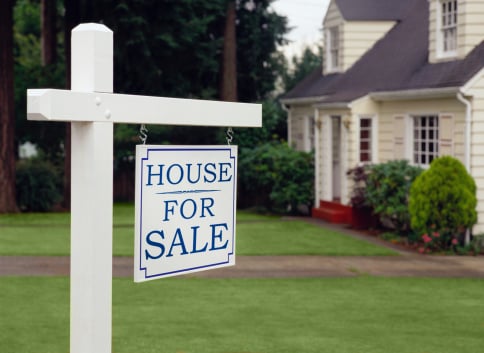Housing
January Foreclosure Rates Jump Higher, Several States Still Crippled
Published:
In a sign that the housing recovery may still be uneven, January foreclosure rates moved higher by 8% when compared to December. The primary causes were increases in foreclosure starts and foreclosure auctions. However, the trend actually may help home prices later in the year. Source: Thinkstock
Source: Thinkstock
According to the U.S. Foreclosure Market Report for January 2014:
[F]oreclosure filings — default notices, scheduled auctions and bank repossessions — were reported on 124,419 U.S. properties in January an 8 percent increase from December but still down 18 percent from January 2013. The report also shows one in every 1,058 U.S. housing units had a foreclosure filing during the month.
January marked the 40th consecutive month where U.S. foreclosure activity declined on an annual basis, but the annual decline of 18 percent was the smallest annual decline since September 2012, and the 8 percent monthly increase was the biggest month-over-month increase since May 2012.
The extent to which the trend is uneven is particularly evident in several states and cities — many of which were the most badly damaged by the bursting of the housing bubble:
Counter to the national trend, scheduled foreclosure auctions increased from a year ago in 27 states, including Oregon (up 326 percent), Connecticut (up 223 percent), Maryland (up 113 percent), New York (up 73 percent), and Nevada (up 73 percent).
Scheduled foreclosure auctions in New York were at the highest monthly level since October 2010 — a 39-month high — and scheduled foreclosure auctions in Nevada were at the highest level since February 2012 — a 23-month high.
And:
Scheduled foreclosure auctions in Nevada were at a 23-month high in January thanks to a 43 percent month-over-month spike in the numbers, which were up 73 percent from January 2013. Nevada foreclosure starts and bank repossessions were still down from a year ago, but the state still posted the nation’s second highest foreclosure rate: one in every 533 housing units with a foreclosure filing.
Maryland overall foreclosure activity increased on a year-over-year basis for the 19th consecutive month in January, helping the state post the nation’s third highest foreclosure rate for the month: one in every 543 housing units with a foreclosure filing.
Other states with foreclosure rates among the nation’s 10 highest in January were Illinois (one in every 603 housing units with a foreclosure filing), New Jersey (one in every 619 housing units), Connecticut (one in every 752 housing units), Delaware (one in every 818 housing units), South Carolina (one in every 850 housing units), Ohio (one in every 885 housing units), and California (one in every 921 housing units).
The housing markets where hit so badly in Nevada and parts of central California that it will take them years to recover, and some may never recover entirely. On a city-by-city basis, major metropolitan areas in Florida, another of the hardest hit states in the downturn, continued to have terrible foreclosure rates:
Eight of the top 10 foreclosure rates in January among metropolitan statistical areas with a population of 200,000 or more were in Florida, led by Port St. Lucie with one in every 211 housing units with a foreclosure filing — more than five times the national average.
Other Florida metros with foreclosure rates ranking among the nation’s 10 highest in January were Miami at No. 2 (one in every 239 housing units with a foreclosure filing); Palm Bay-Melbourne-Titusville at No. 3 (one in every 279 housing units); Lakeland at No. 4 (one in every 294 housing units); Ocala at No. 5 (one in every 330 housing units); Orlando at No. 6 (one in every 358 housing units); Tampa at No. 7 (one in every 389 housing units); and Jacksonville at No. 9 (one in every 410 housing units). Orlando and Tampa were the only two Florida metros in the top 10 where foreclosure activity did not increase from December to January.
Foreclosure activity in Atlantic City, N.J. increased 117 percent from a year ago and the metro area’s foreclosure rate — one in every 400 housing units with a foreclosure filing in January — ranked No. 7 for the month. One in every 421 housing units in Rockford, Ill., had a foreclosure filing in January, the nation’s 10th highest metro foreclosure rate for the month despite a 37 percent year-over-year decrease in foreclosure activity.
Some economists believe that until foreclosed homes are pushed through the system and many of these homes are sold, prices in the worst off states and cities cannot rise. A jump in foreclosures will take excess inventory off the market. And foreclosed homes, which are often sold at discounts to market by banks, pull down prices in the neighborhoods in which they are for sale. So, as the price competition from these cheap homes begins to dwindle, homeowners will be able to raise their sales prices.
Finding a qualified financial advisor doesn’t have to be hard. SmartAsset’s free tool matches you with up to 3 fiduciary financial advisors in your area in 5 minutes. Each advisor has been vetted by SmartAsset and is held to a fiduciary standard to act in your best interests. If you’re ready to be matched with local advisors that can help you achieve your financial goals, get started now.
Thank you for reading! Have some feedback for us?
Contact the 24/7 Wall St. editorial team.